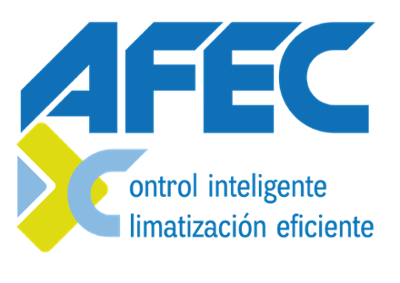

AFEC experts reveal the keys to comply with the RITE
The experts on the Working Group on Regulation and Control of the Air Conditioning Equipment Manufacturers Association (AFEC), coordinated by Sara Sanza and offering support to projects and management, respond comprehensively to a series of questions on the importance of compliance with the Regulation of Thermal Installations in Buildings (RITE) and contribute a series of recommendations and additional advice.
How important is compliance with the RITE in the regulation and control of installations?
The RITE establishes that there must be control by thermal zone depending on compartmentalisation, use, orientation, occupancy and schedules. This is key to energy efficiency, comfort and legal obligation. In the first section, only the necessary spaces are air-conditioned, reducing consumption. In terms of comfort, it allows the minimum and maximum temperatures to be regulated by zone. Thirdly, it is a mandatory regulation, in line with the new Energy Performance of Buildings Directive (EPBD).
In general, is the regulation being complied with?
Unfortunately, this is not always strictly adhered to at present. Many dwellings and installations still use a single thermostat for the whole dwelling or divide only between "day and night", which is not valid according to RITE.
This is one of the reasons why the AFEC Regulation and Control working group, within the framework of the "Intelligent control, efficient air conditioning" campaign, drafted the reference document for professionals, users and Public Administrations Recommendations for compliance with the RITE in regulation and control, which is the basis for the comments in this interview.
What are the most unknown and the most important aspects to comply with RITE correctly?
Regarding the most unknown aspects, a single thermostat per dwelling is not enough, nor is a simple day/night programming. Secondly, heat pumps require minimum inertia volumes, adequate exchange surfaces and oversized storage tanks in order to be compliant and efficient. Thirdly, the location and sizing (flow rates, thermal jumps, electrical installation in accordance with the Low Voltage Electrotechnical Regulations or REBT) directly affect compliance. And finally, there is the obligation to measure the consumption and thermal energy delivered and, therefore, the performance with which the air conditioning equipment is working, regardless of the system chosen.
Some of the most important aspects are: installing individual room control (thermostatic valves, room thermostats, motorised grilles, etc.); complying with the installation requirements of each manufacturer; and ensuring that systems are designed for thermo-hygrometric control by thermal zone (minimum category THM-C3). All these aspects must be assessed and defined by technicians and professionals.
Indeed, the implementation of space or thermal zone control in residential air-conditioning systems is crucial to comply with RITE requirements. Can you summarise the main recommendations as given in the document?
Sure. In radiator installations, install thermostatic valves on each radiator; for underfloor heating/cooling, install one thermostat per occupied room; for ducted centralised air conditioning, install motorised grilles or plenums controlled by the zone thermostat. Room air systems are already compliant and only require correct calibration.
In terms of optimising energy efficiency in heat pumps, the recommendations would be as follows: work with lower flow temperatures in winter and higher in summer; choose the location of the outdoor unit well (avoid obstacles, contrary winds); maintain adequate water flow rates (recommended thermal jump: 5ºC); ensure sufficient inertia volume (above the minimum required, if necessary); ensure a large DHW exchange surface (≈0.25 m²/kW); dimension DHW storage tanks appropriately; and hybridise the heat pump with photovoltaic (or solar thermal) self-consumption to make use of solar surpluses.
What other issues are noteworthy in this area?
As well as the regulatory and technical aspects already mentioned, it is also worth highlighting the training and awareness of users and professionals: a large part of the non-compliance with RITE is due to a lack of knowledge of the obligations and of the technological solutions available in regulation and control. On the other hand, digitisation and continuous monitoring: sensorisation and smart control systems not only facilitate regulatory compliance, but also make it possible to anticipate inefficiencies and encourage preventive maintenance. Thirdly, integration with the energy transition: control systems are essential to integrate heat pumps, distributed renewable generation and storage, consistent with the EPBD and decarbonisation targets. And last but not least, there’s effective monitoring and inspections: to ensure a real impact of RITE, inspections and compliance monitoring need to be strengthened, complemented by incentives and dissemination of good practices.
European legislation establishes a target of zero-emission buildings by 2030 for new-builds and 2050 for existing buildings. In this context, compliance with RITE should not only be seen as a legal obligation, but as a key strategy to achieve efficiency, comfort, economic savings and technological modernisation.
This is where the AFEC Regulation and Control Working Group comes in, tasked with generating consensus between manufacturers, decision-makers, installers and other stakeholders in the sector, facilitating the correct application of the RITE and other effective standards. The group also seeks to share the knowledge of its experts, promote best practices, identify barriers in the implementation of control solutions and propose technical recommendations that contribute to energy efficiency, user comfort and the decarbonisation of the building stock.





